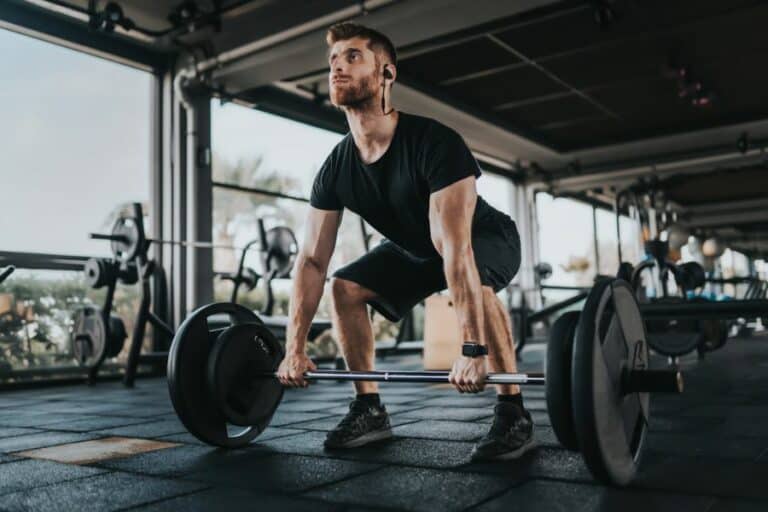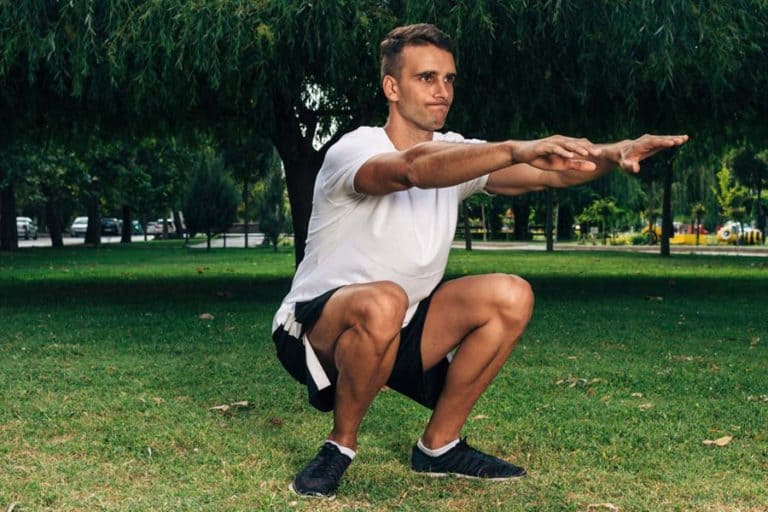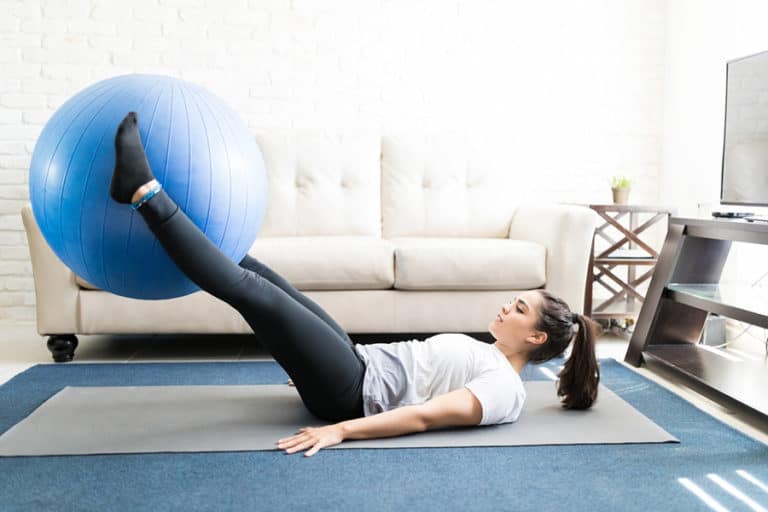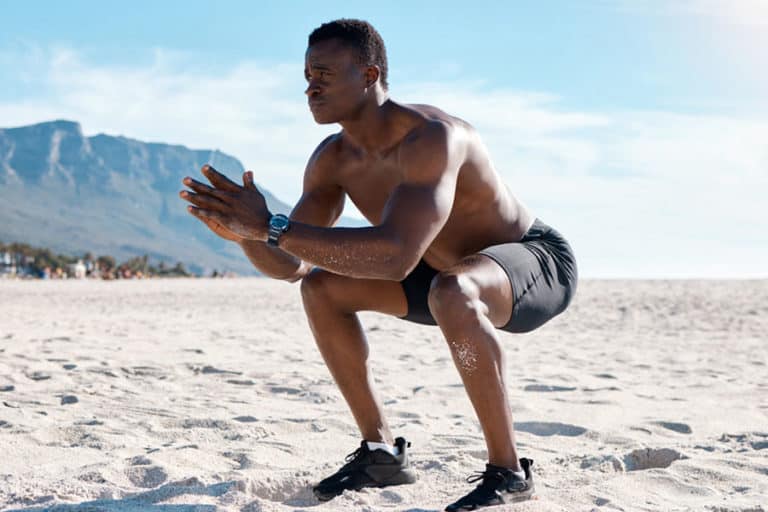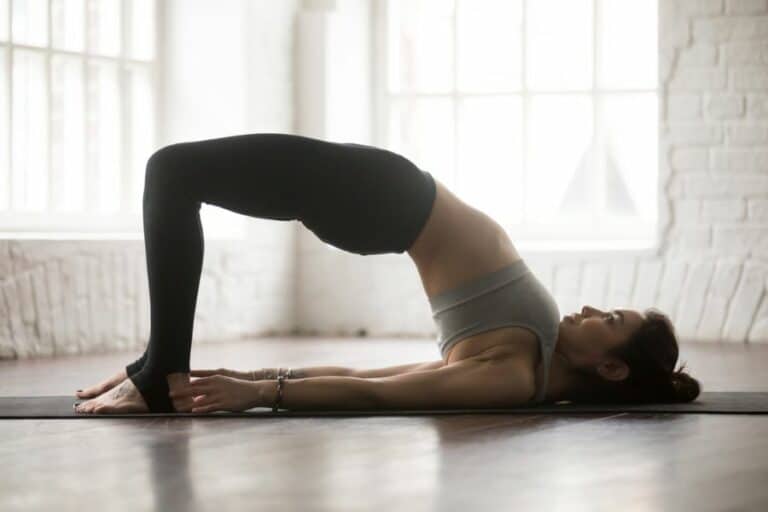Upper Glute Workout: 9 Exercises To Build Your Upper Glutes
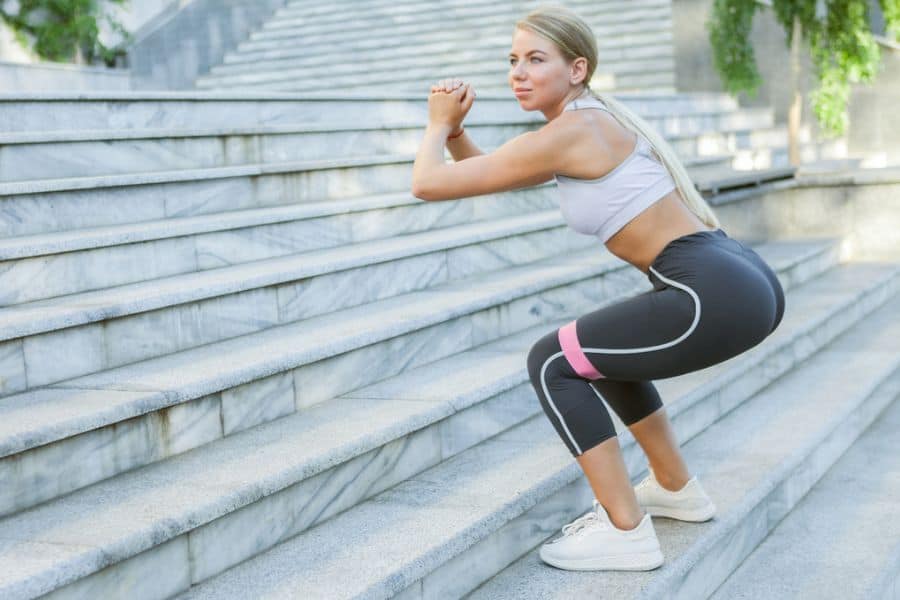
Anatomy | Exercises to do | 1-week workout plan | Benefits
Strong glutes are important for maintaining proper posture. The upper gluteal muscle, known as the gluteus medius, is a particularly vital gluteal muscle. It is responsible for extending and rotating the hip, as well as supporting the body during standing and walking.
Therefore, a good upper glute workout is essential to ensure the proper functioning of this muscle. We have put together 9 of the best upper glute exercises to help you achieve the same.
Anatomy of the glute muscles
The glutes are an important group of muscles consisting of three main gluteal muscles [1]Radiopaedia: Gluteal muscles. These muscles help us perform many essential day-to-day activities effectively.
Below is a list of all the 3 glute muscles along with a description of the functions they perform:
1. Gluteus maximus
This is the largest and most superficial of the gluteal muscles. This muscle is important for activities such as walking, running, and climbing stairs.
2. Gluteus minimus
The gluteus minimus [2]National Library of Medicine: Gluteus Medius and Minimus Muscle Structure, Strength, and Function in Healthy Adults: Brief Report is the smallest and deepest of the gluteal muscles. It helps to abduct the thigh and stabilize the pelvis, especially during activities such as walking and running.
3. Gluteus medius
The gluteus medius is located beneath the gluteus minimus and above the gluteus maximus. This muscle helps to stabilize the pelvis and maintain proper posture when standing and walking on uneven surfaces.
List of 9 best exercises for your upper glute workout
If you’re looking to build up your glutes, there are a lot of different exercises you can try. We’ve got 9 of the best upper glute workout routines for you.
1. Barbell glute bridges
Target muscle: Gluteus maximus, gluteus medius, and gluteus minimus.
How to do barbell glute bridges:
- Start by laying down flat on your back. Roll the barbell over your thighs. Let it rest over your hips.
- Bend your knees to a 90-degree angle. Ensure your feet remain flat on the ground.
- Grab the barbell and begin thrusting it upwards with your hips. Press through your heels and engage your core muscles and glutes to drive the movement.
- Ensure your head and shoulders are flat on the ground throughout the movement.
- Pause for a few seconds in the upward position with the barbell and then slowly lower back.
- Repeat this movement for about 3-4 sets of 15-25 reps.
Summary: Barbell glute bridges are a great way to strengthen and tone the muscles in your buttocks. You can adjust the difficulty of the exercise by using a heavier or lighter weight and by changing the number of repetitions.

2. Single leg bridge
Target muscle: Hamstrings, hip flexors, lower back muscles, gluteus maximus, gluteus medius, gluteus minimus.
How to do a single-leg bridge:
- Lie on your back with your knees bent and feet flat on the ground.
- Lift one leg off the ground and extend it out straight.
- To support the lift, contract your abs, squeeze your buttocks, and raise your hips until your shoulders and knees are in a straight line.
- Squeeze your core towards your spine as you lift the hips.
- Hold this position for a few seconds until you feel you can’t be in this position anymore.
- Slowly get back into the starting position and repeat the same for the other leg.
Summary: Single-leg bridges are an excellent exercise for strengthening and toning the muscles in the lower body, including the glutes, hamstrings, and quadriceps. This exercise is beneficial because it challenges your balance and stability.
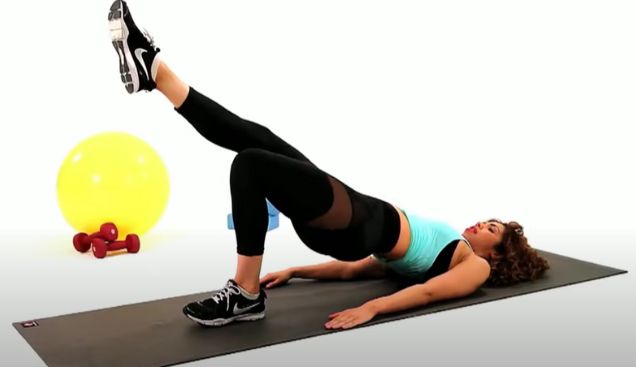
3. Banded butterfly bridge
Target muscle: Gluteus maximus, gluteus medius, gluteus minimus, hamstrings.
How to do a banded butterfly bridge:
- Start by lying down with your back flat on the ground.
- Rest your hands on the ground a little further away from your hips.
- Place a resistance band slightly above your knees.
- Now, get into a butterfly position by bending your knees such that they are facing outwards. Join your feet together.
- Slowly raise your hips in an upward direction. Ensure your neck and shoulders are flat on the ground.
- Remain in this position for a few seconds and then repeat.
Summary: Banded butterfly bridge helps your legs become stronger by working on the inner thigh muscles and the pelvic muscles. It also helps in strengthening abdominal muscles.

4. Barbell hip thrust
Target muscles: Hamstrings, abductors, adductors, gluteus maximus, gluteus medius, and core.
How to do a barbell hip thrust:
- Begin by sitting on the floor with a flat bench behind you.
- Place a barbell on the floor in front of you and position it such that it is touching your hip bones.
- Place your upper back and shoulder blades on the bench, making sure that your shoulder blades are pressed firmly into the bench.
- Bring your feet close to your glutes, knees bent, with your toes pointing forward.
- Drive through your heels and thrust your hips upward, lifting the barbell off the floor.
- At the top of the movement, your hips should be fully extended and your glutes should be contracted.
- Slowly lower the barbell back to the starting position.
- Repeat for the desired number of repetitions.
Summary: Barbell hip thrust is an excellent upper glute exercise that trains more than just the glutes. It also strengthens the other muscles in the posterior chain. This exercise focuses on balance and stability of the lower body while providing strength-building benefits.

5. Single leg hip thrust
Target muscle: Gluteus maximus, gluteus medius, and gluteus minimus.
How to do a single-leg hip thrust:
- Sit on the ground with your back against a bench and your knees bent.
- You can keep your arms behind your head or rest them on the bench.
- Bend one leg to a 90-degree angle with your feet flat on the ground and keep the other leg straight on the ground.
- Now lift the straight leg off the ground. Let the other bent leg rest on the floor.
- With the support of your bent leg, raise your hips and upper body till your upper back lies flat on the bench parallel to the ground.
Summary: Single-leg hip thrust is an isolation exercise that is glute focused. It improves the strength of your hips and promotes glute muscle development. This exercise helps with increased athletic performance, hip extension strength, and injury prevention.

6. Dumbbell lateral lunges
Target muscle: Quadriceps, abductors, gluteus maximus, gluteus medius, gluteus minimus, adductors, hamstrings.
How to do dumbbell lateral lunges:
- Stand with your feet shoulder-width apart and hold a dumbbell in each hand with your palms facing in, towards your body.
- Step out to the side with your right foot, landing on the ball of your foot.
- Now bend your right knee as you lower your body towards the ground. Your left leg should remain straight, and your left heel should lift off the ground.
- Push through the ball of your right foot to return to the starting position.
- Repeat the exercise on the left side.
Summary: Dumbbell lateral lunges work multiple muscles throughout the lower body. This workout improves balance and stability in each leg. You can also choose to do this exercise with kettlebells or simply without any weights.
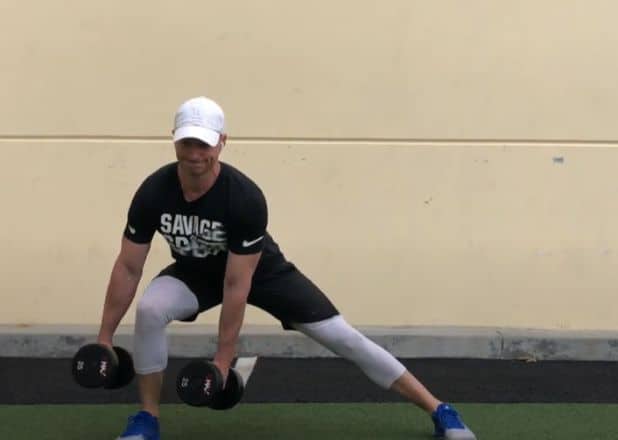
7. Curtsy squat
Target muscle: Quads, gluteus maximus, gluteus medius, gluteus minimus, hamstrings, calves.
How to do a curtsy squat:
- Stand with your feet hip-width apart and your hands on your sides or in a clasp in front of you
- Move your left foot behind you and across your right leg, bending your knees to lower into a curtsy position.
- Push through the heel of your right foot to straighten your legs and return to the starting position.
- Repeat the movement on the other side by stepping your right foot behind and across your left leg.
- Continue alternating sides for the desired number of reps.
Summary: Curtsy squat is a great way to strengthen your legs and stabilize your core muscles. This workout sculpts the legs and helps tone and build the muscles around the hips by targeting the quads and glutes.
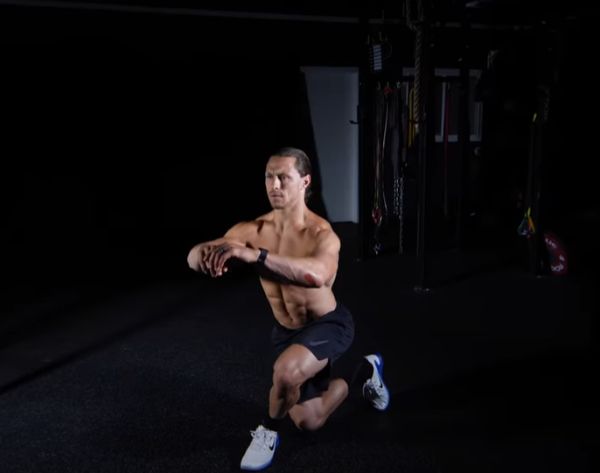
8. Sumo Squat
Target muscles: Adductors, gluteus maximus, gluteus medius, gluteus minimus, quads, hamstrings, calves, hip flexors, and core muscles.
How to do a sumo squat:
- Stand with a wide stance on the floor.
- Your feet must be wider than hip-width apart, and your feet should be aligned with your knees.
- Then, you can choose to hold a single dumbbell/ kettlebell or simply hold your palms together near the chest.
- Keep your spine in a neutral position. Squat until your thighs and waist are parallel to the floor.
- You can hold this position for a few seconds and then repeat.
Summary: The sumo squat is a great way to activate your adductors or inner thighs. This workout strengthens your knees, increases the size of your glutes, works your inner thighs, and enables you to handle more weight than a traditional squat.
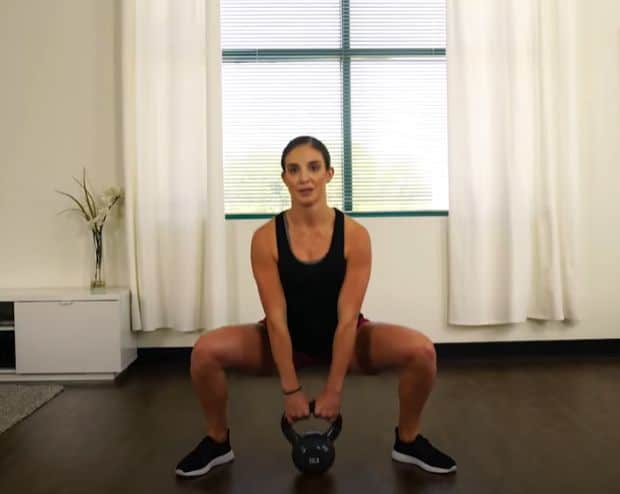
9. Dumbbell front squat
Target muscle: Quadriceps (quads), gluteus maximus, gluteus medius, gluteus minimus, hips, and hamstrings.
How to do a dumbbell front squat:
- Start by standing flat on the ground with a dumbbell in each hand.
- Push the dumbbells up to your neck and keep the dumbbell positioned at the level of your shoulders.
- Make sure your feet are shoulder-width apart.
- Squat down as you hold the dumbbell up at shoulder level. Keep your spine neutral for better support.
- Hold the position for a few seconds and then repeat.
Summary: Dumbbell front squat helps in strengthening the spinal erectors. This exercise also helps to bring mobility to the wrists and challenges your quads to a greater extent.
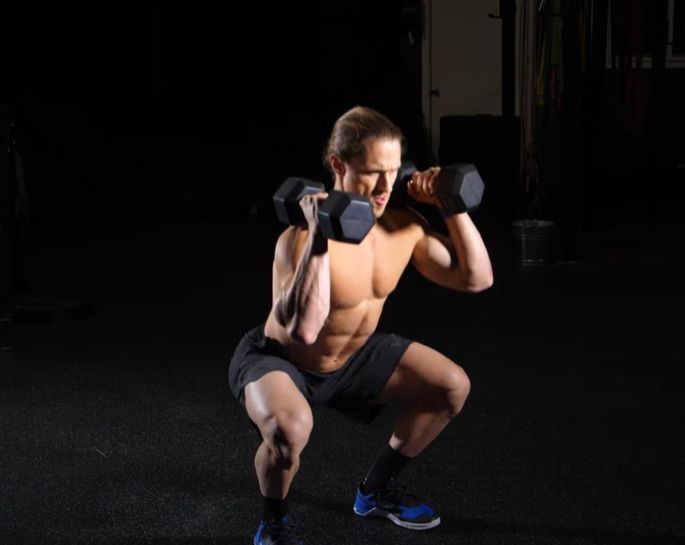
1-week workout sample plan
Below, we have created a one-week upper glute workout plan to help you get started.
| Days | Upper glute workout |
| Monday | Barbell glute bridges: 8-10 reps Single leg bridge: 10-15 reps Banded butterfly bridge: 15-20 reps |
| Tuesday | Dumbbell lateral lunges: 8-10 reps Sumo squat: 8-10 reps Single leg bridge: 8-10 reps |
| Wednesday | Dumbbell front squat: 8-10 reps Banded butterfly bridge: 10-15 reps Curtsy squat: 8-10 reps |
| Thursday | Barbell glute bridges: 8-10 reps Barbell hip thrusts: 8-10 reps Banded butterfly bridge: 8-10 reps |
| Friday | Dumbbell lateral lunges: 8-10 reps Sumo squat: 8-10 reps Curtsy squat: 8-10 reps |
| Saturday | Sumo squat: 8-10 reps Single leg bridge: 10-15 reps Barbell hip thrusts: 8-10 reps |
| Sunday | Rest |
Why should you have a strong upper glute?
The upper glute has several important functions:
- It helps to keep your body balanced when you are standing or walking.
- It helps with balance when you are squatting down or running.
- It helps you lift heavy objects like bags or weights.
Strong upper glutes can also help to improve your balance and stability, which can reduce the risk of falls and injuries.
Your upper glutes are responsible for your posture and alignment. They help to keep the pelvis level and aligned with the spine, which can help to prevent pain and discomfort in the lower back and hips.
Conclusion
Having a strong upper glute can help to improve your overall strength and functional fitness, allowing you to perform everyday activities with greater ease and efficiency. It can also enhance your performance in sports and other physical activities.
Given that the upper glute is a crucial part of the body, proper care is needed to keep it fit and toned. Failure to do so may cause you to suffer complications that may affect your everyday routine or workouts.
References
| ↑1 | Radiopaedia: Gluteal muscles |
|---|---|
| ↑2 | National Library of Medicine: Gluteus Medius and Minimus Muscle Structure, Strength, and Function in Healthy Adults: Brief Report |


